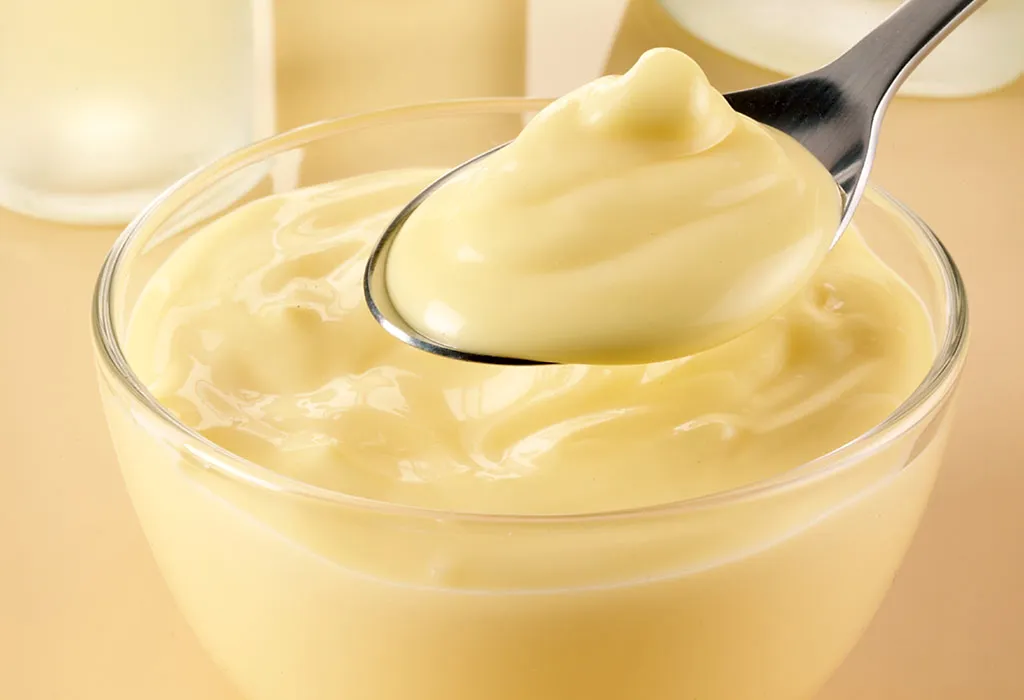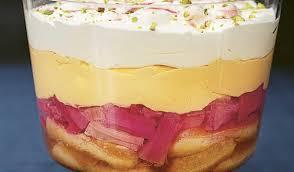Introduction
Imagine the luscious aroma of vanilla-scented custard cascading over a delightful serving of apple crumble, sticky toffee pudding, or jam sponge. The allure of this classic dessert companion is undeniable. In this comprehensive guide, we’ll delve into the world of custard-making, exploring its traditional roots, troubleshooting common issues, and discovering creative ways to elevate this timeless treat.

Unveiling the Basics of Traditional Custard
- The Foundation: Ingredients and Process
Traditional custard is a harmonious blend of milk, eggs, sugar, and a hint of vanilla flavor. The basic recipe serves as a canvas that can be tailored to personal preferences. As you master the fundamentals, you’ll unlock the ability to adjust thickness, richness, and even infuse chocolatey notes with a touch of cocoa powder.
- The Cornflour Conundrum
The classic crème anglaise, or pouring custard, relies solely on eggs for thickening. However, the addition of a dash of cornflour introduces a layer of foolproof security. It prevents the eggs from overcooking, resulting in a smoother, thicker custard.
- Vanilla Variety: Pod vs. Extract
For those without a vanilla pod, fear not. Vanilla extract can seamlessly substitute. Discover the art of incorporating the extract at the custard’s final stages for an equally enchanting flavor.
- Enhancing Richness: Yolks and Cream
Unearth the secrets to crafting a decadent custard by increasing the egg yolk quantity or substituting whole milk with double cream. This adjustment not only enriches the custard but also transforms its texture into a delectable baked custard consistency.
Troubleshooting Custard Quandaries
- Whisking Woes: Lumps and Texture
To avoid lumps, maintain a continuous whisking motion while introducing milk. Alternatively, add milk gradually, a ladle at a time. When returning the custard to the pan, low heat is key to preventing clumping and sticking.
- The Perils of Scrambling: Temperature Matters
Custard may turn grainy and scrambled if the milk is too hot. Allow it to cool slightly before slowly incorporating it into the eggs, preventing undesirable cooking on contact.
- Battling the Dreaded Skin
Preserve the custard’s velvety texture by placing clingfilm directly on top, creating a protective barrier against air exposure.
- Straining for Perfection
While straining isn’t mandatory, it can be the secret to achieving an impeccably smooth finish. Pass the custard through a sieve if a grainy appearance troubles your culinary masterpiece.
Beyond the Basics: Creative Custard Adventures
- Churning Delights: Custard Ice Cream
Explore the realm of frozen treats by churning custard in an ice cream machine. The result? A heavenly topping for pavlovas or a stand-alone indulgence.
- Trifles and Puddings: Custard Extravaganza
Immerse custard in the world of trifles or elevate bread and butter pudding by soaking slices of brioche before baking. Transform your custard into a lavish crème brulee by skipping the final saucepan stage and caramelizing under a hot grill.
The Perfect Custard Recipe
Ingredients:
- 600 ml milk
- 1 vanilla pod (or ½ tsp vanilla extract), cut down the middle and seeds scraped out
- 4 egg yolks
- 2 tbsp. caster sugar (about 30g)
- 2 tsp. cornflour
Directions:
- In a saucepan over medium heat, bring milk, vanilla seeds, and pod to a boil.
- Whisk together egg yolks, sugar, and cornflour in a bowl. Remove boiled milk from heat, let it cool, and remove the vanilla pod.
- Gradually pour the milk into the egg mixture, whisking continuously.
- Return the mixture to the pan over low heat, stirring gently until thickened to coat the back of a wooden spoon.
TOP TIP: Don’t discard the vanilla pod; rinse and add it to a jar of sugar for delightful vanilla sugar!
In conclusion, custard-making is an art form that combines tradition with creativity. Mastering the basics and troubleshooting common issues opens the door to a world of culinary possibilities, from frozen delights to elegant desserts. So, embark on your custard journey, and let your kitchen be filled with the enchanting aroma of this dreamy, velvety creation.


